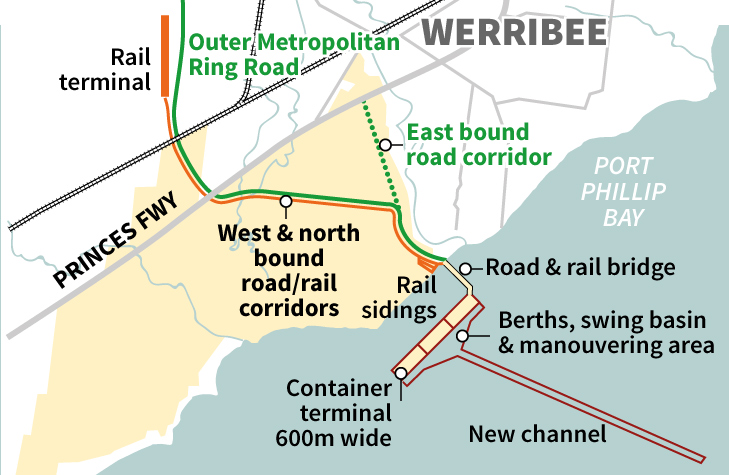Bay West is Best

This week Infrastructure Victoria put through their recommendations of the where, when and why for the second major port of Melbourne. In its report, it estimated that the Port of Melbourne would reach capacity at 8 million TEU, therefore a new port would not be required until 2055. Once the Port of Melbourne exceeds capacity, existing trades would need to be relocated to Victoria's other ports. Infrastructure Victoria believe it would make more economic, social and urban planning sense to move some of the container trade to a port in Bay West. The reason Bay West was chosen was due to its strong transport, land use, environmental and amenity advantages in comparison to Hastings.
A Hastings terminal with design capacity of 9 million TEU would place unnecessary demand upon the rail network. It would mean one freight train would need to pass through Flinders Street and Melbourne’s other busiest commuter railway stations. Moreover, there would be significant environmental impact at Hastings, particularly on seagrass habitat.
If enhancements were to be made at the Port of Melbourne, upgrading and enlarging Swanson Dock would come at great cost and with severe disruption. Significant dredging would be required at Swanson Dock in order to service larger ships. There would be ongoing constraints on the West Gate Bridge for an increasing number of trucks needed to service the port, congestion on the Monash Freeway and impact on local residential traffic.
The advantages of Bay West port include the least amount of dredging with the lowest amount of environmental impact. The total cost for the dredging, road and rail connections to the existing network and construction of the container terminal has been estimated at approximately $6.4 billion.
Infrastructure Victoria’s report recommends the planning for the port begin 15 years prior to it being required, but land and transport corridors should be secured as soon as possible.
A Hastings terminal with design capacity of 9 million TEU would place unnecessary demand upon the rail network. It would mean one freight train would need to pass through Flinders Street and Melbourne’s other busiest commuter railway stations. Moreover, there would be significant environmental impact at Hastings, particularly on seagrass habitat.
If enhancements were to be made at the Port of Melbourne, upgrading and enlarging Swanson Dock would come at great cost and with severe disruption. Significant dredging would be required at Swanson Dock in order to service larger ships. There would be ongoing constraints on the West Gate Bridge for an increasing number of trucks needed to service the port, congestion on the Monash Freeway and impact on local residential traffic.
The advantages of Bay West port include the least amount of dredging with the lowest amount of environmental impact. The total cost for the dredging, road and rail connections to the existing network and construction of the container terminal has been estimated at approximately $6.4 billion.
Infrastructure Victoria’s report recommends the planning for the port begin 15 years prior to it being required, but land and transport corridors should be secured as soon as possible.









